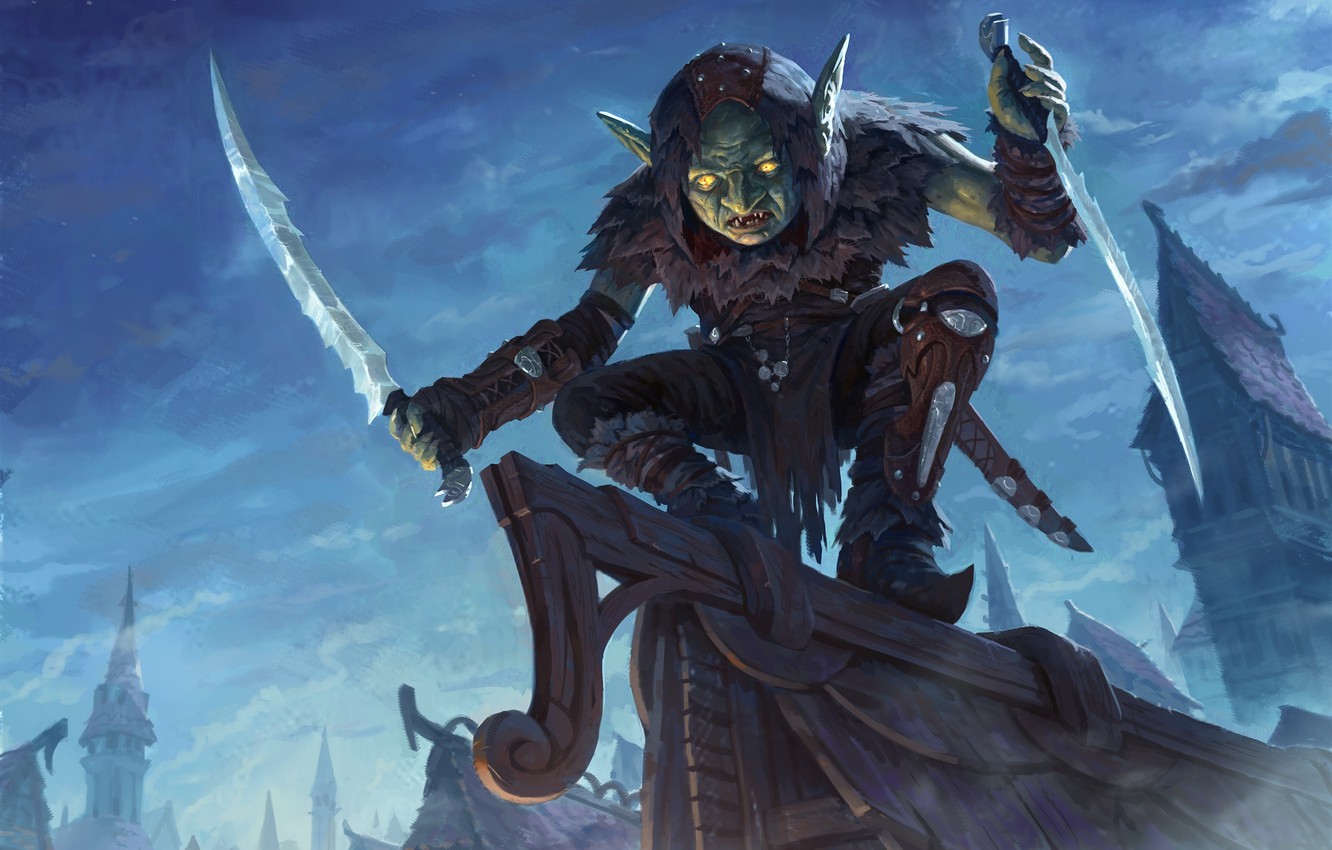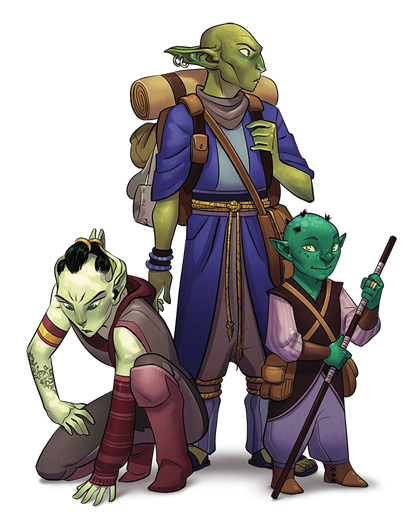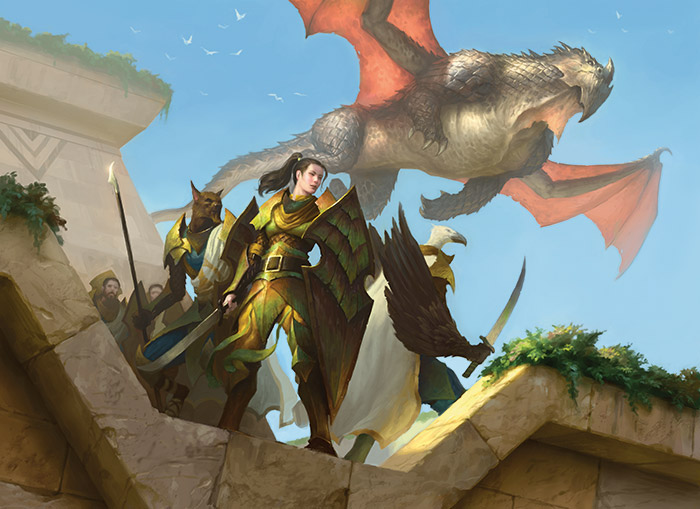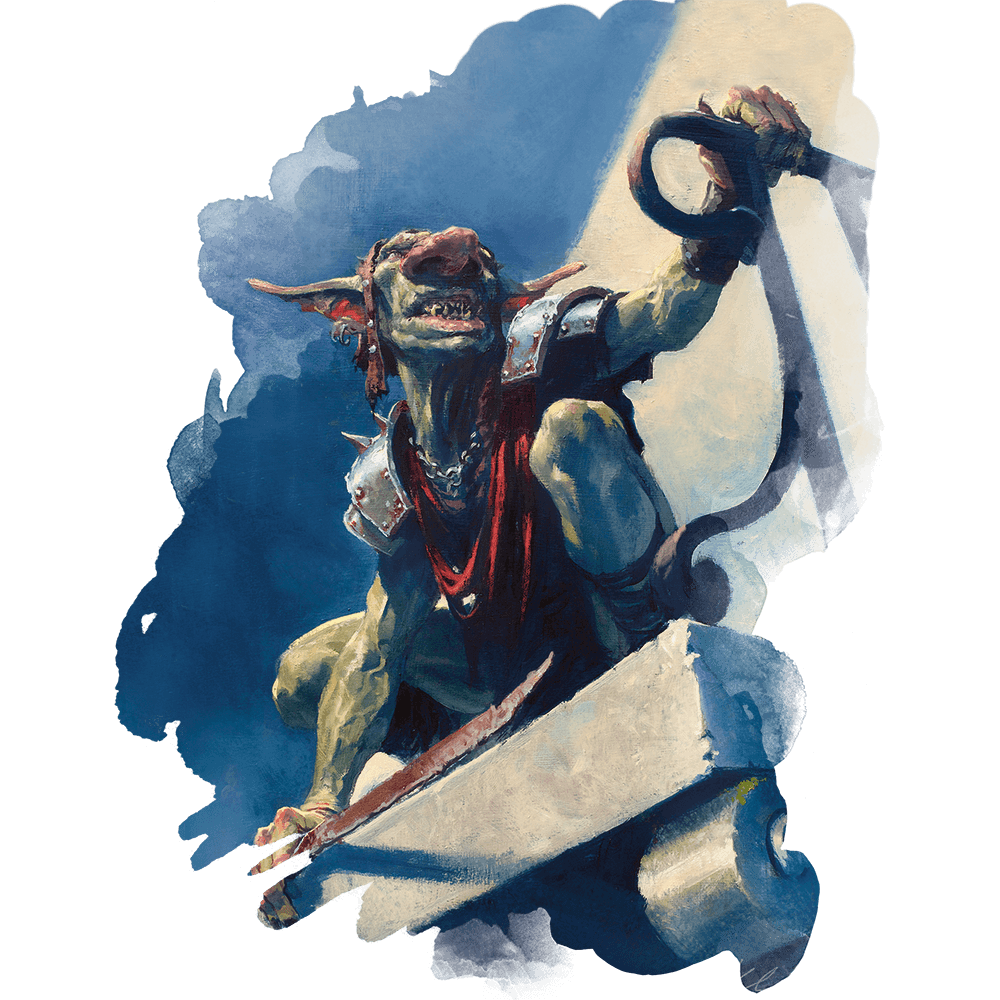Goblin
Goblin occupy an uneasy place in a dangerous world, and they react by lashing out at any creatures they believe they can bully. Cunning in battle and cruel in victory, goblins are fawning and servile in defeat.
Goblins know they are a weak, unsophisticated race that can be easily dominated by bigger, smarter, more organized, more ferocious, or more magical creatures. Their life are short, and as such, they seek to trap and enslave any creatures they encounter, but they flee from opposition that seems too daunting. For miles around their lair, they employ pit traps, snares, and nets to catch the unwary, and when their hunting patrols encounter other beings, they always look for ways to capture their foes instead of killing them.
Few goblins run up against the fringes of society, and the result varies greatly. Rare are those who manage to adapt to those kinds of places, as such, very little goblin can be found in tana's empire or the lightfoot land. Goblins are highly adaptative, as the verdan prove, and it is extremely hard to define common features for those creatures. Everything, from their skin color to their average height and build changes from a tribe to another. However, goblin female tend to be slightly taller than goblin male.b
Their endeavor made them known, they are known as weak creatures, but not to underestimate, as their weakness is only met by their cowardness. But the rare goblinoids found in cities are generally far from the standard expectation for those creatures.
Culture
Fermented Food
Contrary to common misconceptions, goblins have a distinct culinary culture that revolves around the art of fermentation and controlled spoilage. While they may reside in modest camps or caves, these spaces are carefully designated for the ideal conditions needed to ferment their beverages and food. Notably skilled with mushrooms, goblins have mastered the cultivation of these fungi, and a carefully prepared assortment of authentic goblin-grown mushrooms can serve as a delectable substitute for an adventurer's ration.Magic
Goblins see the ability to birth children as an inherently magical ability, so in their culture all 'magical' professions are a woman's job. These include actually magical things like shamanism, witchcraft, and potion making, but also everything else they associate with magic like the ability to read and write, and any medical treatment.Characteristics
Physical features
Sexual dimorphism is a distinctive trait observed in goblinoids, with females generally exhibiting a larger and more robust physique compared to males. This divergence in physical characteristics is believed to be linked to the goblinoid species' high reproductive capacity, where the ability of females to bear and nurture offspring played a significant role in their evolutionary development.Subraces
Bugbear
Bugbear are fierce warriors born for battle and mayhem! Much larger than their goblin cousins, bugbears like to bully and boss other creatures around. Theywill fight for others if their employer promises enough gold and carnage to satisfy their barbaric tastes.However, even a well-paid bugbear is an unreliable ally. Bugbears are surpisingly stealthy for their size.They are often found in the company of goblins whom they have enslaved or rule over with brutal force. Beneath their fierce exteriors, bugbears are cowards who will abandon wounded members of their parties and flee when the fight turns against them. A wounded bugbear has no qualms about betraying his former allies if it will help save his own hide!Verdan
Because the verdan have not dwelled long in the world, they are still discovering new things about themselves. Chief among these discoveries is that their physical forms change as they age, signifying that the mutative power of influencing them is not done with them. They soon learned that their kind were fated to eventually undergo a dramatic, painful, and random growth spurt that sees them transformed to hobgoblin size over a period of days. At the same time, many verdan undergo changes in coloring as they age. Male verdan typically have little to no hair, while females sport shocks of wiry hair that they try to tame in a variety of styles. But the color of any verdan’s hair, skin, and eyes can transform from their original jade tones to pale white, deep ebon, or any other shade in between. A verdan’s ears also undergo numerous spontaneous alterations over their lifetime, from the typical range of point and peak seen among the elves, to huge ears that sweep back from the head like wings, and which are often pierced behind the head with a single ring to keep them from flapping about.Names
The oldest verdan names spring from goblinoid traditions, but more recent names reflect the character of the different cultures these folk have encountered. Verdan often take halfling-sounding names or gnomish-spunding name. Verdan make no differentiation between male, female, and family names, and often eschew family names altogether. Verdan Names: Bronn, Crahma, Dolar, Dreeda, Duglee, Gruvald, Hulm, Jeal, Kalo, Klesh, Korm, Lathi, Ovlig, Paracii, Pils, Praet, Promul, Reezni, Rin, Shylk, Slyra, Sollo, Stalsii, Stromvo, Stussa, Syrkart, Takat, Toit, Tubyna, Varr, Veriga, Wraq, Wural, WurxeeHistory
Enslavement and rage
During the War of the Ancients, the demon lords recognized the goblinoids as potential slaves and warriors to bolster their ranks. However, the bugbears vehemently resisted this enslavement. In response, the demons devised a malevolent disease, a Rage, which continues to afflict the bugbear population to this day. This affliction grants them increased strength and resilience, but it also drives them towards primal and destructive instincts. As a consequence of this disease, the goblins were coerced into servitude as minions for the demons, toiling under their oppressive rule to manufacture weapons and armor for the demonic legions. However, it was in the final stages of the war, mere years before its culmination, that the goblins managed to orchestrate a successful rebellion. Their uprising plunged the demon ranks into disarray, creating a window of opportunity for the allied forces to launch a decisive counterattack.Fey Pact
Faevlins, goblins who dared to break a pact with the fey, now bear the burden of their treachery with upside-down heads and bodies tinted in a peculiar shade of mint green. During a tumultuous era of conflict, the goblins cunningly offered their aid to the summer court in exchange for newfound power. However, when they thought themselves unobserved, they callously reneged on their agreement, foolishly believing they could escape the consequences. Fate took a twisted turn when the battle shifted, pitting the goblins against the hags alone. Seizing the opportunity, the cunning hags offered a tantalizing proposition, fully aware that the goblins' betrayal would invoke a curse, effectively severing their ties with the summer court. Tempted by the hags' promises, the goblins succumbed to their deceit, unaware of the dire consequences that awaited them. As a result, they find themselves cursed and banished from the fey realm, forced to dwell once again in the material plane.Verdans
The goblin, known as the highly adapting monsters they are, drifted from the Green earth at the end of the era of dragons, settling toward the east of the soon-to-be Lightfoot land. Settling on the side of the eastern lake, they achieved the peaceful life they were looking for. When the gnomes and halfling united they joined the union. But over the years, the Goblin changed, mutating at an incredible path, even for a goblin. By the time they joined the union with the gnome and halfling, their skin was turned the color of jade and their blood began to flow black. Soon after, their ears grew pointed, and they gained a limited form of telepathy. Some think such event did occur due to the influence and powers of local dryads Without a cultural identity or memory of their own, the verdan quickly adopted the cultural practices of gnomes and halfling.General Information
Homo gobalus
Geographic Distribution
Green Earth
Languages
Goblin
Physiologie
40–60 years
Size
Small
Average Height
1.2 m Male, 1.25 m Female
Average Weight
27 kg







Comments